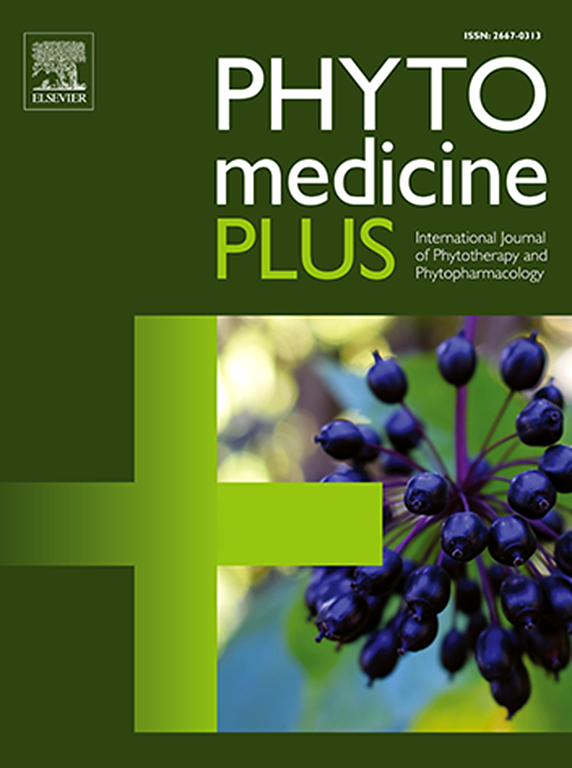The commercial availability of plant-based phytochemical components used in GLP-1 inhibition for the treatment of type-2 diabetes
Q3 Pharmacology, Toxicology and Pharmaceutics
引用次数: 0
Abstract
Aim of the study
The objective of this review is to evaluate the commercial availability and therapeutic potential of plant-based phytochemical components that enhance using GLP-1 reduction to treat type 2 diabetes. This work explores their conventional uses, pharmacological effects, and mechanisms of action in modulating GLP-1 inhibition, aiming to expand knowledge on their role in diabetes management.
Materials and methods
A literature review involving international and domestic databases was conducted to identify existing research on plant-based compounds that stimulate GLP-1 inhibition. Data on the availability of these formulations in the market, their ethnopharmacological applications, and their phytochemical composition were gathered and analyzed.
Results
The review identified several plant-derived compounds with GLP-1-stimulating properties, including berberine, curcumin, resveratrol, quercetin, and flavonoids, which have demonstrated the potential to enhance insulin secretion and improve glucose homeostasis. Many of these bioactive compounds are commercially available as herbal supplements or integrated into anti-diabetic formulations. Some formulations have shown greater efficacy and safety than others and have undergone clinical evaluations for diabetes management.
Conclusion
Plant-based GLP-1 inhibition offers promising alternatives for type 2 diabetes treatment. However, challenges such as phytochemical variability, extraction complexity, low bioavailability, and stability issues hinder their synthesis and large-scale production. Advanced techniques are required to enhance formulation, standardization, and commercialization. Addressing these challenges is essential to ensuring consistency, efficacy, and broader application, particularly in resource-limited settings.

用于抑制GLP-1治疗2型糖尿病的植物性植物化学成分的商业可用性
本综述的目的是评估基于植物的植物化学成分的商业可用性和治疗潜力,这些植物化学成分可以增强使用GLP-1降低治疗2型糖尿病。本研究探讨了它们在调节GLP-1抑制中的常规用途、药理作用和作用机制,旨在扩大对它们在糖尿病管理中的作用的认识。材料和方法对国内外数据库进行文献综述,以确定现有的植物基化合物刺激GLP-1抑制的研究。收集和分析了这些制剂在市场上的可得性、其民族药理学应用和其植物化学成分的数据。结果本综述发现了几种具有glp -1刺激特性的植物源性化合物,包括小檗碱、姜黄素、白藜芦醇、槲皮素和黄酮类化合物,这些化合物已被证明具有增强胰岛素分泌和改善葡萄糖稳态的潜力。许多这些生物活性化合物作为草药补充剂或整合到抗糖尿病配方在商业上可用。一些配方已显示出比其他配方更大的疗效和安全性,并已经过糖尿病管理的临床评估。结论基于植物的GLP-1抑制为2型糖尿病的治疗提供了有希望的替代方案。然而,诸如植物化学变异性、提取复杂性、低生物利用度和稳定性等挑战阻碍了它们的合成和大规模生产。需要先进的技术来加强配方、标准化和商业化。解决这些挑战对于确保一致性、有效性和更广泛的应用至关重要,特别是在资源有限的情况下。
本文章由计算机程序翻译,如有差异,请以英文原文为准。
求助全文
约1分钟内获得全文
求助全文
来源期刊

Phytomedicine Plus
Medicine-Complementary and Alternative Medicine
CiteScore
3.70
自引率
0.00%
发文量
178
审稿时长
81 days
期刊介绍:
 求助内容:
求助内容: 应助结果提醒方式:
应助结果提醒方式:


